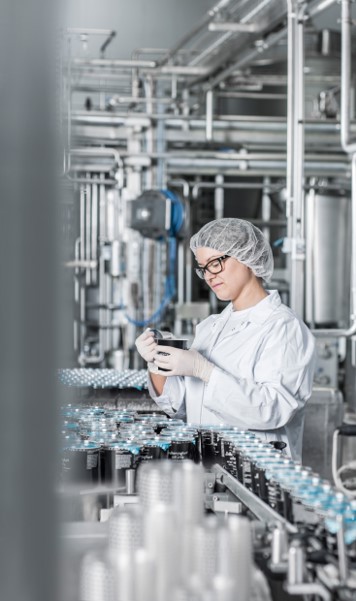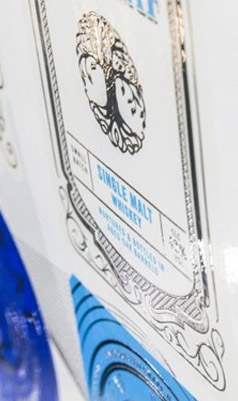

Flexible Packaging
ACTEGA is an international leader in flexible packaging by offering tailored inks, coatings and adhesives.
LEARN MORE

ACTEGA is an international leader in flexible packaging by offering tailored inks, coatings and adhesives.
LEARN MORE

Our focus on innovation is at the heart of our DNA, so we invest heavily in the development of new technologies.
DISCOVER MORE

Our goal is becoming climate-neutral by 2025. Discover more about our commitment to environmental protection.
DISCOVER MORE

Discover our calendar with great images and powerful finishing effects.
MoreYou have already subscribed to our newsletter.
You successfully unsubscribed from our newsletter
Continue ShoppingThe days of "the best packaging is no packaging" are over, says Dr. Thomas Sawitowski, Global Head of Flexible Packaging at ACTEGA. The appearance of a product on the shelf is too important for a brand to want to forego an emotional interaction at this point in the customer journey. In the interview, the packaging expert explained which innovations also ensure greater sustainability and why paper is not always the best alternative to plastic.

1. Dr. Sawitowski, as part of the ALTANA Group, ACTEGA offers comprehensive packaging solutions on the market. What is your central core competence?
A priori, we operate as a formulating company whose range of services is divided into three business lines: In addition to solutions for metal packaging such as lids and cans, which flow into the food processing industry, for example, and our paper and board segment for the cardboard and corrugated board sector, we are characterized in particular by our expertise in the area of flexible packaging, which I am responsible for globally. Here, we offer solutions for flexible packaging such as stand-up pouches, aluminum wrappers and lidding films, such as those used for yoghurt pots, as well as a broad label portfolio that ranges from classic wet glue products, such as for beer bottles, to wraparound solutions for mineral water bottles and in-mould labels (IML) for food packaging, where the label itself becomes part of the packaging. Our core expertise here lies primarily in our established know-how, which covers both the functional aspects and an appealing aesthetic design.
2. What are the technical challenges?
The end product certainly has to meet complex requirements, which sometimes differ depending on the customer spectrum and the respective market. When sealing yoghurt pots, for example, German consumers want a rather tight pull, as otherwise they would get the mistaken impression that the product has already been opened; in other countries, however, it is important to consumers that they do not have to apply too much force when tearing off the seal. In addition to a wide range of applications such as various printing processes, our expertise is also in demand when it comes to these types of issues. We can also make an important contribution to ensuring that the respective product catches the customer's eye directly, for example through appropriate hologram and 3D effects or matt and gloss coatings.
3. To improve their sustainability footprint, many manufacturers want to switch to paper as their primary packaging material. What challenges does this process entail?
This market observation is absolutely correct, even if paper is not the more sustainable solution in every context – you have to take a differentiated view depending on the manufacturing process. At the same time, paper is actually a rather poor packaging material in itself – it is neither water nor grease resistant, but is permeable to gas and therefore reduces the minimum shelf life in many cases compared to a plastic alternative. The central challenge therefore lies in refining the paper in the most environmentally friendly and effective way possible. Especially in this context, it is important to take a holistic view of the product and packaging as a unit in order to identify the best option despite all the inevitable trade-offs. In practice, many manufacturers do not always meet these requirements: for example, there is paper packaging to which so much plastic finishing has been applied that it is unlikely to be more sustainable than regular plastic packaging. To avoid such undesirable developments, broad and specialist product and process expertise is required, which ACTEGA is happy to contribute at every stage of development.
4. Many people now believe that the best packaging is no packaging. Does this approach pose a long-term threat to your business model?
This idea did indeed resonate with manufacturers for a long time. However, many have meanwhile moved away from it. After all, if the product appearance disappears into the background, the packaging can no longer evoke any emotions or position itself with a sustainable brand image. As a result, the product is no longer visually distinguishable from the respective no-name alternatives – this is a major problem for most brands. I believe that this is why there has now been a broad rethink: Manufacturers want to be sustainable, but they also want to present themselves with attractive packaging. Thanks to numerous technological innovations, this is no longer a contradiction. Moreover, packaging per se is not an evil that should be minimized at all costs. ACTEGA also takes a clear stance against unnecessary and excess packaging waste, but in many cases packaging provides important and beneficial added value: it extends the shelf life of products, protects consumers from contamination with harmful substances and prevents food from expiring too quickly. In my view, the solution therefore lies in the establishment of value-adding cycles, including comprehensive collection systems: Because where there is a deposit on PET bottles, almost none are disposed of in an environmentally harmful way. In my view, this observation points us in the right direction.
This article was originally published by Wirtschaftsforum: https://www.wirtschaftsforum.de/interviews/actega-gmbh/die-verpackung-ist-kein-notwendiges-uebel-sondern-wichtiger-teil-des-produkts